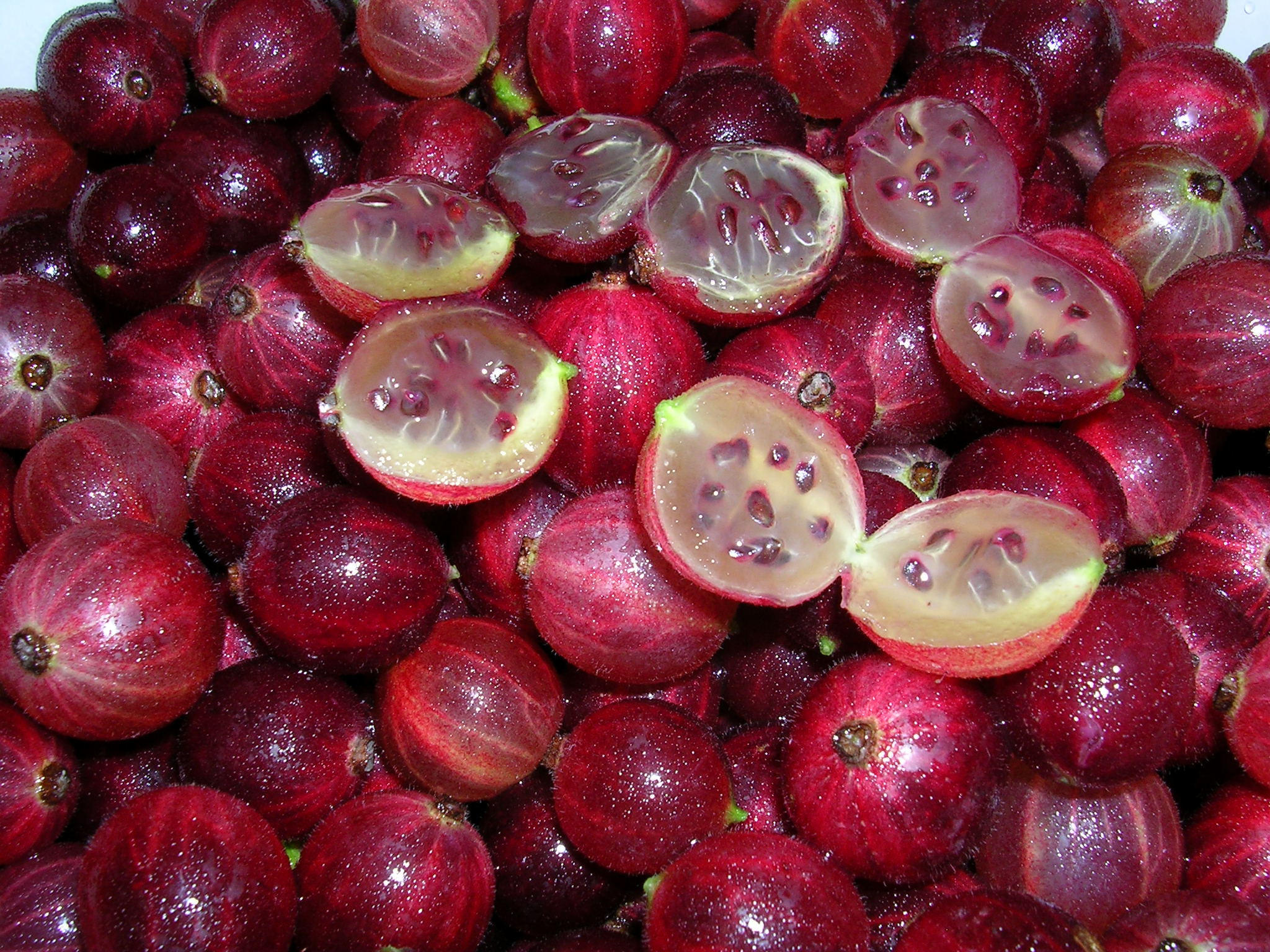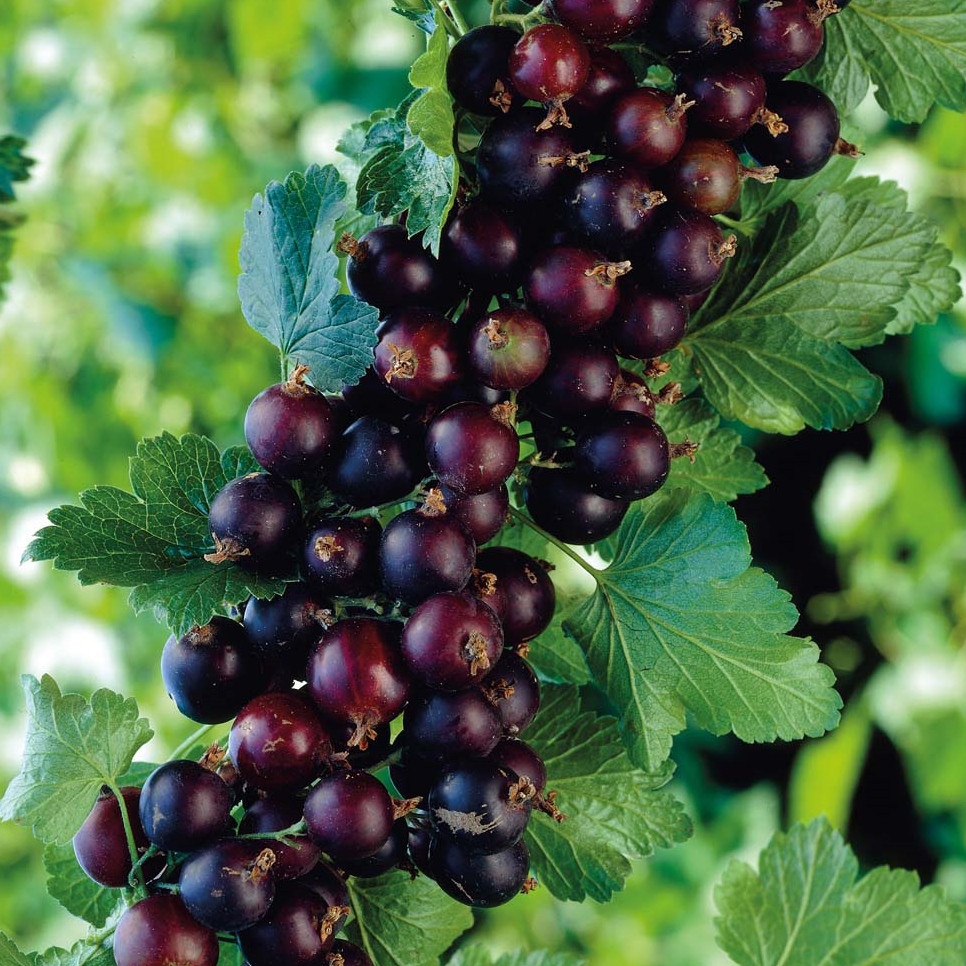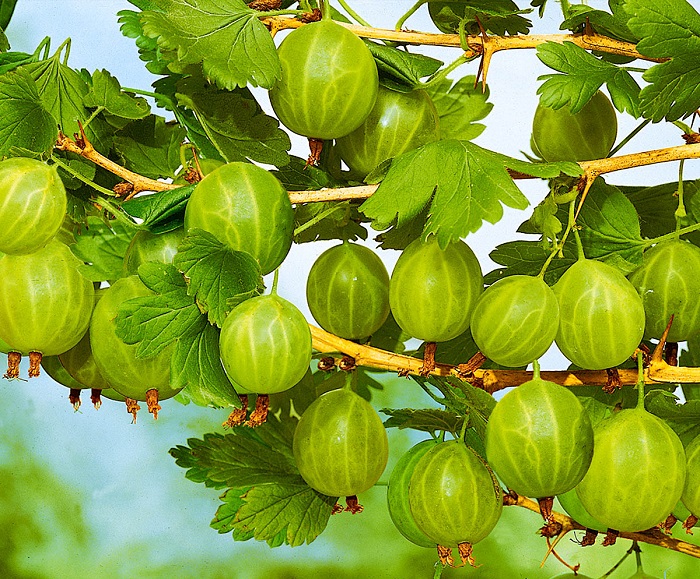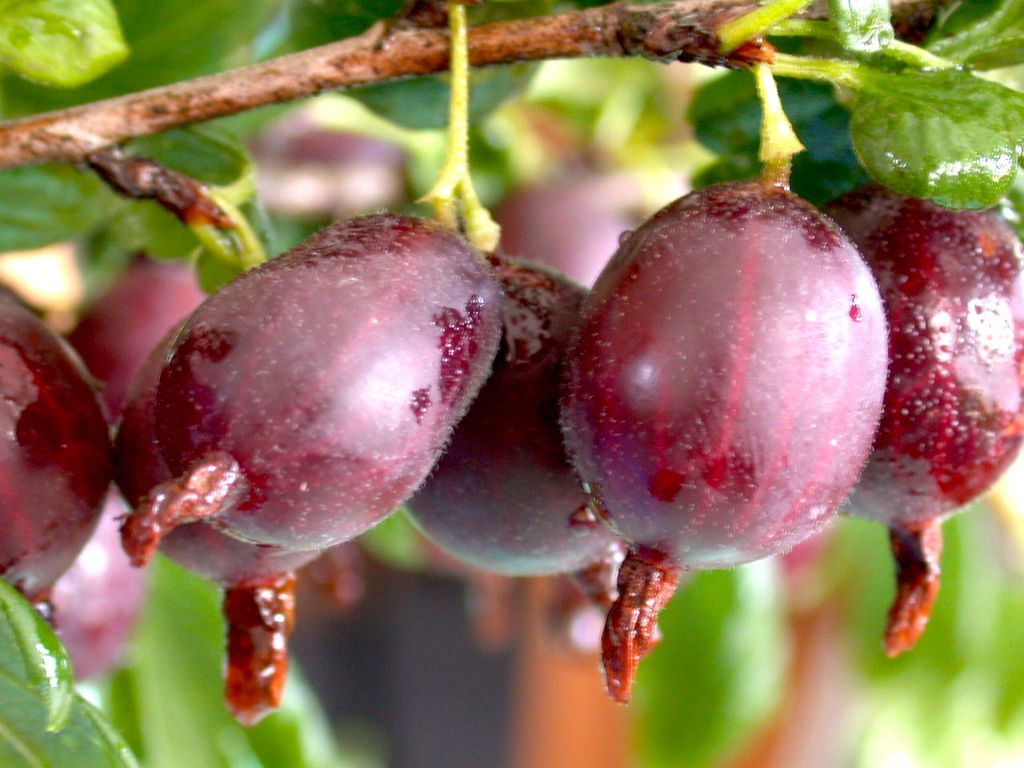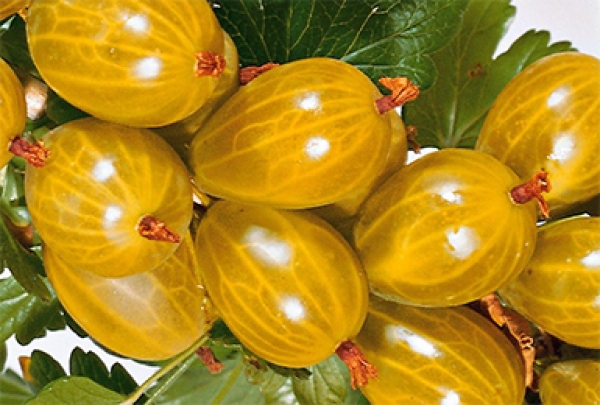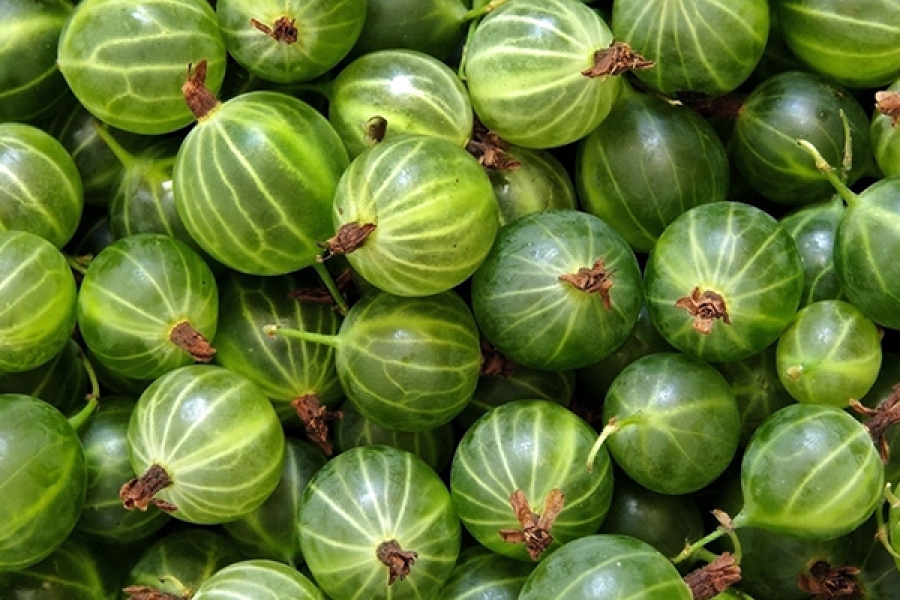Gooseberry Malachite is one of the most common fruit bushes in Russia. Although its selection and registration took place more than half a century ago, its fruits, as before, are valued for their tart taste and useful composition.
Content:
The history of the creation of the variety
Gooseberry Malachite, as a separate variety, appeared back in 1959. The author of the successful experiment was the breeder K. Sergeeva, an employee of the V.N. I. Michurin. The variety owes its appearance to two other varieties known at that time: gooseberries "Date" and "Black Negusa". The result was successful, and gooseberries began to be used in many households throughout the CIS. Large berries and a rich harvest are the main reasons why gardeners love this gooseberry variety so much.
Characteristics of the variety
Frost resistance
The plant perfectly tolerates severe frosts, withstands moderate droughts, but not prolonged heat. Experienced gardeners and scientists assure that the Malachite gooseberry bush can withstand up to 30 degrees of frost. Sharp temperature fluctuations do not lead to the loss of Malachite bushes. That is why gooseberries can be grown in almost any region of Russia. Most often it is planted in the suburbs and in central Russia.
Bloom
Normally, Malachite begins to bloom at the end of May. The flowers are of medium size and are particularly bright. The petals are loose and slightly bent downward. One bone, two-flowered. As for the ovary, it is mostly naked.
Yield
The first fruits of the green gooseberry Malachite bestows upon the owners 2 years after planting. With good care, the culture can bear fruit up to 30 years. The largest number of fruits (from 4 to 6 kg) can be harvested from the 4th to the 20th year. The variety belongs to the type of medium early varieties. You can harvest around the 20th of July.
The berries of the bush have a high nutritional value. They are rich in:
- carotene;
- peptin;
- vitamins;
- organic acids.

Rich harvest of Malachite gooseberries
Malachite fruits are used for auxiliary treatment: anemia, various gum diseases. They remove salts and radionuclides, fight toxins.
Important! This varietal shrub is self-pollinated, therefore, does not require other shrubs next to it to increase the yield.
If the owners nevertheless decide to plant several Malachite bushes in a row, it is worth keeping a distance of 1 meter.
Plant parameters
The malachite bush is remarkable for its splendor. It can grow up to 130 cm in height. A large number of intertwined shoots are covered with large, but sparse thorns, which greatly facilitates plant care.
The leaves are traditionally matte green and smooth to the touch. Young light green bush. The plate is concave, has a pointed top and 5 blades.
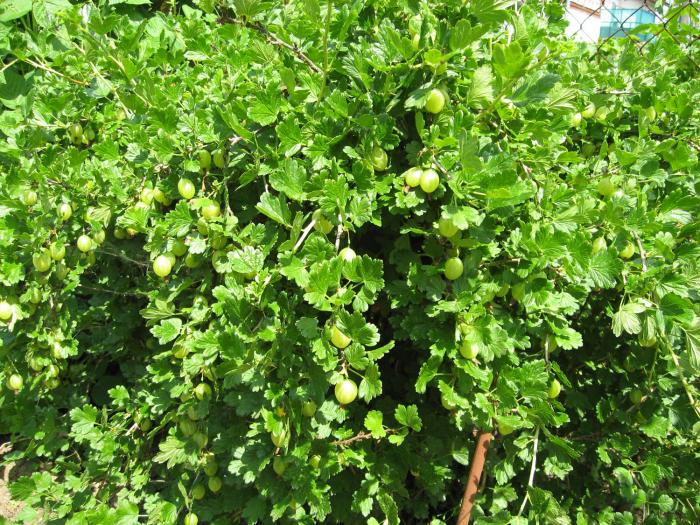
The appearance of the gooseberry bush Malachite
The fruits are large green with white veins. One berry of the variety weighs about 4-8 grams, is distinguished by a large number of seeds and a thin skin. The berries become sweeter as they ripen. Externally, they may have a light waxy coating, acquire an amber color. Ripe fruits do not fall off the branches for a long time.
Fruit use
Once harvested, fresh fruits should only be stored in a cool, dark place for no more than 4-7 days. The berries can be frozen.The temperature drop should not be extreme. To begin with, the fruits are kept in the refrigerator for several hours, and only then they are placed in the freezer.
Gooseberry Malachite berries have good taste. Tasters estimate their taste at 3.8 points out of 5 possible. These are versatile berries, from which you can make jams, fruit drinks, compotes, add to various desserts or main dishes, and consume them raw.
Argotechnical features of cultivation
How to plant
Planting of young bushes can be carried out both in the spring and in the autumn. In the first case, you need to catch the time when the earth is already warm enough, but the buds are not yet swollen. Not every gardener can catch such a moment, therefore, bushes are more often planted in the fall. This should be done at least 5 weeks before the onset of frost. This period will be enough for the plant's root system to develop as successfully as possible.
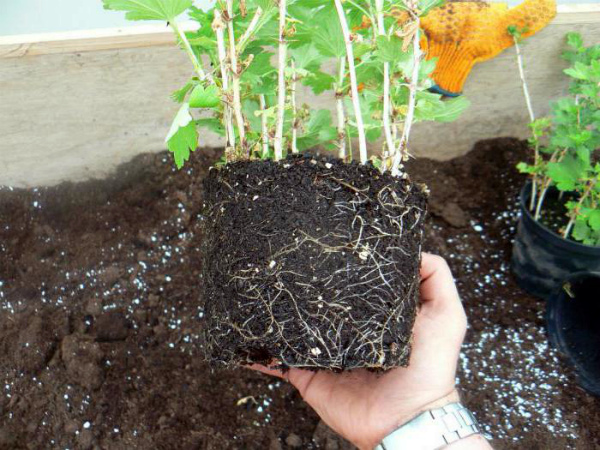
Malachite gooseberry seedling
When choosing a place for planting bushes, it is better to opt for bright and sunny areas. The young bush should be protected from the winds, so if there is an artificial or natural barrier nearby, this will be very useful. As for the soil, it should be neutral or slightly acidic. An excellent option would be to plant a plant in clay or loam soil.
Important! Do not plant Malachite gooseberries in the lowlands. This area is characterized by high humidity, so the plant can be affected by a fungus.
The bush hole needs to be prepared about 2 weeks before the planting date. Its optimal size is 50 by 50 cm. A depth of 60 cm will be sufficient. Planting is not complete without fertilization. For this, humus, wood ash, or a mixture of them are suitable.
When buying a seedling for planting, you need to carefully examine it. Shoots cannot be dry, damaged, but must be thick.
Before planting, the roots are slightly pruned to a "live place". After planting, it is allowed to cut off all shoots, except for the 5 strongest ones. Thus, the root system will develop better.
Care features
You can count on the longevity of the plant and good fruits only if it is properly cared for. Gooseberry Malachite (the description of the variety indicates this) requires such measures: pruning, watering, fertilizing, loosening, fighting diseases and pests.
- Cutting. For the first time, such a procedure is carried out immediately after planting seedlings. In subsequent years, once a year is sufficient. For pruning, it is better to choose the time in early spring (before the buds swell) or in late autumn (when all the leaves fall off). You need to remove those shoots that: have a dark color, weak, dry, grow too low. Gardeners shouldn't forget to handle fresh cuts. For this purpose, a garden pitch is used;
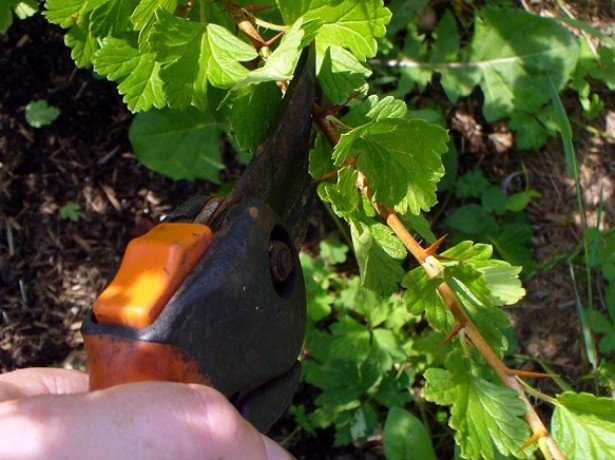
Cutting gooseberry shoots Malachite
Important! You cannot carry out any manipulations during the period of active juice production (at the beginning of spring).
- Pouring. Although the Malachite variety can survive a drought, it is definitely not worth counting on good fruits without an optimal level of moisture in the soil. To the greatest extent, the plant needs moisture during the periods:
- the appearance of ovaries;
- growth of new shoots;
- fruit formation;
- ripening of fruits.
For the development of the root system, you need to actively water the gooseberries in August-September.
Important! It is not recommended to use the sprinkling method for pouring. The best option would be to moisten the soil under the bush itself.
You can find out about the moisture deficit by the fruits (turn yellow, grow small) and leaves (fall off prematurely).
- Top dressing. Can be carried out when the plant is already 2 years old. The first time is performed in the fall, when Malachite finishes blooming. The second time is after the harvest has been harvested. Experts recommend using the following optimal feeding options:
- combost - up to 10 kg;
- superphosphate - 80 g;
- saltpeter - 40 g;
- potassium chloride - 20 grams.
- Loosening. It is useful to loosen the top layer of the soil in order to saturate the soil with oxygen and prevent the appearance of weeds;
- Pest control. Most often, the Malachite variety is attacked by such pests as: moths, sawflies, aphids. To protect the plant in the spring, you should use ash, biological products or karbofos.
Among the plant diseases to which gooseberries are sensitive is powdery mildew. You can notice the problem by gray spots on the leaves and shoots. Regular baking soda and a solution of ferrous sulfate help to cure the plant.
Important! In case of a disease with powdery mildew, shoots should be treated every 10 days and only in dry weather.
Advantages and disadvantages of the variety
Like any other plant, gooseberry malachite has advantages and disadvantages. Often, gardeners give preference to this variety because of its such advantages:
- high yield - if the owner takes proper care of the bush, he provides 4 kg of fruit per season;
- versatility of fruits that can be used for a wide variety of dishes and drinks, freeze and heat-treated;
- berries can be transported over a long distance without harm to the presentation;
- the variety is resistant to many diseases;
- does not require insulation, can withstand severe weather changes and frosts;
- good taste of ripe berries;
- high nutritional value;
- the fruits adhere firmly to the branches, do not crumble, even when they are overripe.
For objectivity, one should also point out the shortcomings that distinguish the variety. There are few of them, only 2:
- Under conditions of improper care, gooseberries produce very few fruits;
- Malachite is prone to diseases such as anthracosis.
The fresh, somewhat tart flavor of the berries, as well as the durability and rich mineral composition of the fruits, make the Malachite gooseberry widespread popularity among gardeners and do not allow it to be replaced by new hybrids.
